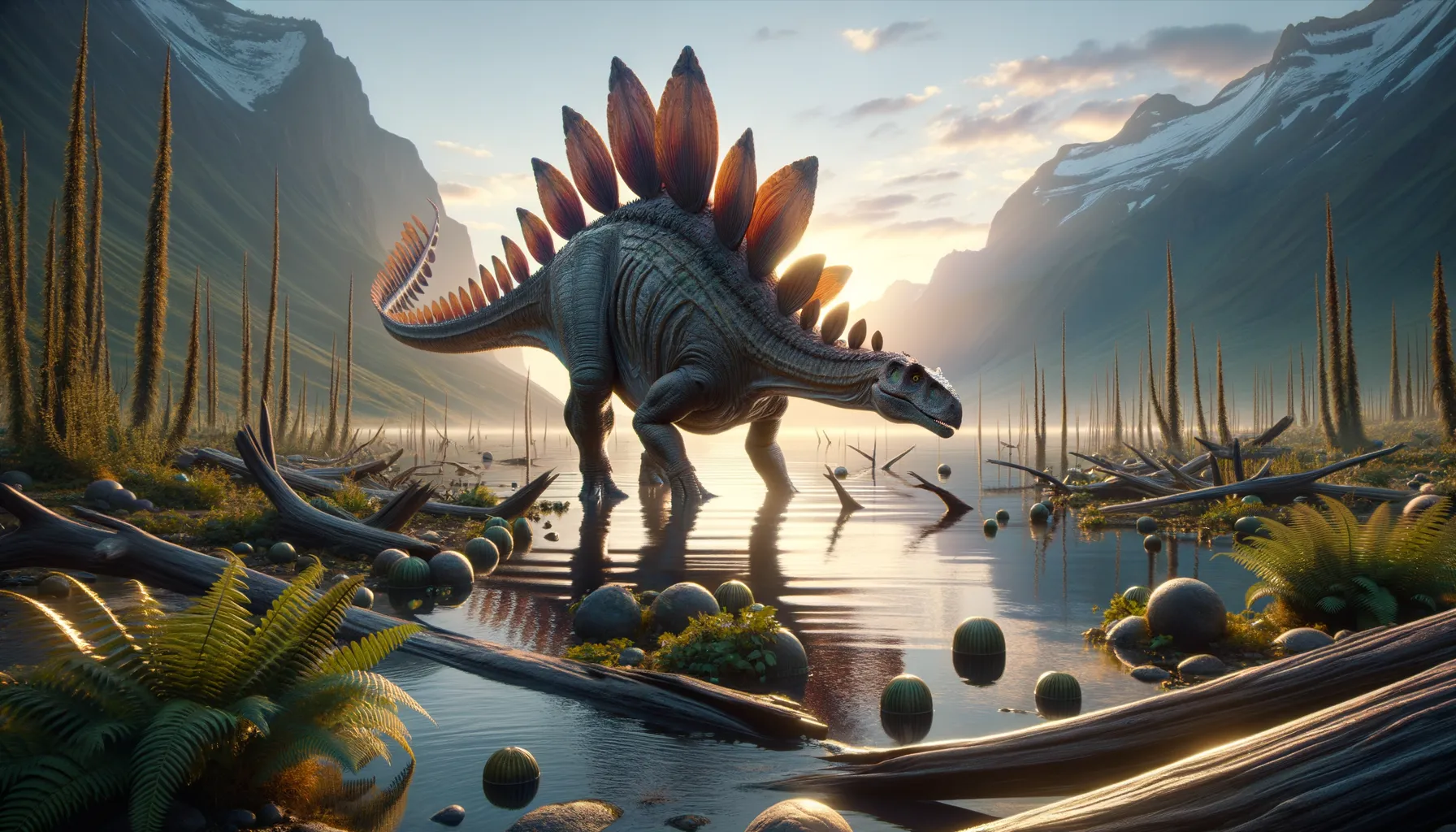
Stegoceras
The headstrong herbivore of ancient times!
Period
Cretaceous
Length
Roughly 2 to 3 meters long.
Height
Around 1 meter at the hips.
Weight
Approximately 40 kilograms.
Stegoceras was a small, bipedal, herbivorous dinosaur that roamed North America during the Late Cretaceous. It belonged to the pachycephalosaurid family, known for their thick-skulled herbivores. Its dome-shaped skull was about 3 inches thick, thought to be used in head-butting contests or display. Stegoceras lived in diverse environments and shows evidence of varied feeding strategies among foliage.
Diet
Stegoceras was herbivorous, primarily feeding on low-lying plants. Its diet likely included leaves, fruits, and seeds, adapted to the vegetation available during the Late Cretaceous.
Hunting
As a herbivore, Stegoceras did not hunt for prey. Instead, it foraged for plant materials, using its keen senses to locate nutritious flora.
Environmental challenges
Stegoceras faced predators like theropods, requiring keen senses and speed to evade capture. Its thick skull may have aided in defense during close encounters. Climate changes during the Late Cretaceous could have affected its food sources, requiring adaptability in its feeding habits. Competition for resources with other herbivores necessitated efficient foraging strategies.
Speed
Moderate pace, relying more on maneuverability than speed.
Lifespan
Estimated to be between 20 to 30 years.
First discovery
First remains discovered in Canada by Lawrence Lambe in 1902.
Fun Facts
- Stegoceras was a small dinosaur, about the size of a sheep, known for its thick, dome-shaped skull.
- Its name means 'horned roof,' referring to the dome on its head which was possibly used for head-butting contests during mating rituals.
- Stegoceras lived during the Late Cretaceous period, around 75 to 80 million years ago, in what is now North America.
- It was a bipedal herbivore, which means it walked on two legs and mainly ate plants.
- The thick skull of Stegoceras could be up to 3 inches (7.5 cm) thick, leading some scientists to believe it was used in fights to establish dominance.
- Fossil evidence suggests that despite its short stature, Stegoceras was likely a fast and agile runner.
- Stegoceras is one of the best-known pachycephalosaurs, a group of dome-headed dinosaurs.
Growth and Development
Stegoceras hatched from eggs laid by females, starting life as small, vulnerable juveniles. They would grow rapidly, developing their characteristic skull domes as they matured. Growth rates varied, influenced by environmental conditions and resource availability. This species reached sexual maturity before achieving full adult size.
Habitat
Stegoceras inhabited diverse environments, ranging from forests to open plains. It adapted to changing landscapes, often living in areas with abundant plant life. Water sources in the habitat provided both hydration and food variety. Its range covered regions that are now part of North America.
Interaction with other species
Stegoceras likely coexisted with various dinosaur species, including both predators and other herbivores. It probably engaged in social behaviors, potentially living and foraging in groups. Its thick skull domes may have been used in intraspecific combat or display during mating rituals. Interactions with predators required vigilance and quick escape responses.
Natural lifespan
Stegoceras could live up to about 30 years in ideal conditions.
Reproduction
Stegoceras reproduced by laying eggs in nests, which were possibly cared for by one or both parents. Females might have laid multiple clutches of eggs over a reproductive season. The young hatched with dome-like skulls that thickened as they matured. Social behaviors may have included adult interaction with juveniles for protection or guidance.
Social behaviour
Stegoceras may have exhibited group-foraging behaviors, enhancing resource acquisition and safety. It possibly engaged in head-butting contests with others of its kind, a trait suggested by its thick skull. Social dynamics might have played a role in mate selection and territorial disputes. Their group structures could have offered protection against predators.
Fossil locations
Fossils of Stegoceras have primarily been found in regions of present-day Canada and the United States. Notable sites include the Dinosaur Provincial Park in Alberta, Canada. These locations provide insights into the Late Cretaceous ecosystems in which Stegoceras lived. Fossils are usually found in sedimentary rock formations from this period, often alongside other dinosaur species.
